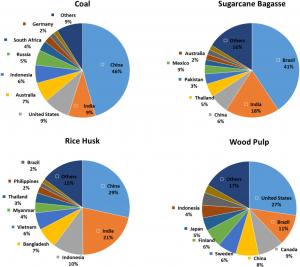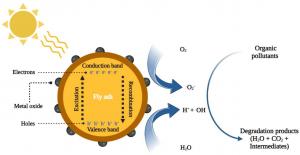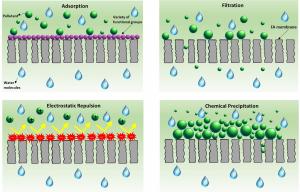
Scientists predict bright future for ash waste
Scientific research has the potential to help the world sustainably manage nearly one billion tons of toxic ash it produces per year.
SHARJAH, EMIRATE OF SHARJAH, UNITED ARAB EMIRATES, December 2, 2024 /EINPresswire.com/ -- The world has the potential today to sustainably manage nearly one billion tons of ash waste it produces every year and turn it into a useful material for water treatment applications, according to a study scientists from the University of Sharjah published in the journal Separation and Purification Technology. (Original Source URL: https://www.sciencedirect.com/science/article/pii/S1383586624028430)
Ash waste or toxic ash is called in scientific jargon “fly ash”. It has emerged as an environmental hazard across the globe since it has been found to contain poisonous substances, organic pollutants, as well as soluble metal oxides which can cause serious chemical burns when touching the skin.
“Transportation across continents increases and rapid industrialization continues leading to surge in the energy consumption. Unfortunately, this has given rise to environmental concerns, with waste fly ash being discarded in alarming quantities − up to 1 billion tons annually,” the scientists write.
The study is essentially a review of the literature on fly ash and how the pollutant produced in massive volumes every year can be rendered unharmful to the environment, but more importantly, it is of practical industrial, economic and livelihood applications to mankind.
The scientists’ reading of the literature confirms that waste ash, which is “a particulate byproduct of burning various waste materials, is a pressing issue due to its environmental impact on soil, water, and air.”
However, their review produces evidence that “this waste can be repurposed for water treatment applications, offering a sustainable solution to waste management and water quality control.”
For long, the authors maintain, scientists and industries have been seeking materials that are low-cost, lightweight, and strong, at the same time, to be used as alternatives to current conventional options for water treatment applications.
“Among these materials, fly ash stands out as a notable contributor to this field. Fly ash consists of fine particles expelled from the boiler with flue gases during combustion of coal, wood, rice husk, bagasse, or other combustible materials,” the scientists note.
The authors highlight that their “comprehensive review” is to fill in what they describe as “a significant need in the field, as there has been limited exploration of the potential of different fly ash sources for water treatment purposes.”
Water scarcity is a big challenge around the globe with more than one billion people lacking access to fresh water. The scarcity is worsened, according to the authors, “by the discharge of inadequately treated wastewater from industries and the contamination of groundwater sources.”
The world is facing an unprecedented water crisis with demand for fresh water predicted to exceed supply by 40 percent by 2030. The authors say this pressing need for fresh water “has fueled the quest for effective and affordable water treatment solutions, leading to a growing interest in repurposing waste fly ash.”
The review focuses on literature from 2015 to 2023, with emphasis placed on research published in high-impact academic journals.
The authors “critically review the utilization of fly ash materials in water purification applications … exploring the current trends and prospects of using fly ash materials in water treatment applications … to provide insights into sustainable waste management and water quality control.”
The authors claim that their “systematic approach” is to provide the most recent and relevant findings by scientists engaged with how to make fly ash sustainable, friendly to the environment and useful to mankind.
“Our review presents … valuable insights into the efficacy and feasibility of utilizing fly ash in various water treatment processes,” the authors go on, adding that they have also identified gaps in extant research and provided recommendations on remaining aspects to be covered by future research.
The statistics the authors provide underscore considerable production of fly ash in the world and from diverse regions, “with notable contributors being coal in China at the forefront with 46 %, sugarcane bagasse in Brazil holding a significant share at 41 %, rice husk in China (29 %) and India (21 %), and wood pulp in the United States (27 %) and Brazil (15 %).”
The authors demonstrate that the literature reveals “remarkable potential” for the utilization of toxic ashes in water treatment applications.” The studies they have reviewed show that environmental concerns associated with fly ash are solvable, and moreover, it can significantly contribute to boosting the current expansive field of water treatment.
Exploring the versatile roles of waste ash as a byproduct of various combustible energy materials, the authors show that the application of fly ash “in crafting ceramic membranes emerges as a fruitful avenue, yielding low-cost, hydrophilic, high permeability, low sintering temperature membranes with a long lifespan and exceptional efficiency in treating industrial wastewater.
“Furthermore, fly ash serves as an economical alternative in photocatalysis, Fenton processes, and as support materials for membranes and electrodes, aligning with environmentally friendly practices and showcasing high reusability.”
However, and despite the notable advancements identified in their review of the literature, the authors mention a plethora of research opportunities in need of investigation if the world wants to see fly ash no longer constituting an environmental hazard and significantly contributing to the expansion of water treatment applications.
“Addressing these gaps will contribute to the practical application of fly ash materials, paving the way for a more sustainable and effective approach to water treatment,” they conclude.
LEON BARKHO
University Of Sharjah
+971 50 165 4376
email us here
Distribution channels: Chemical Industry, Energy Industry, Natural Disasters, Technology, Waste Management
Legal Disclaimer:
EIN Presswire provides this news content "as is" without warranty of any kind. We do not accept any responsibility or liability for the accuracy, content, images, videos, licenses, completeness, legality, or reliability of the information contained in this article. If you have any complaints or copyright issues related to this article, kindly contact the author above.
Submit your press release


